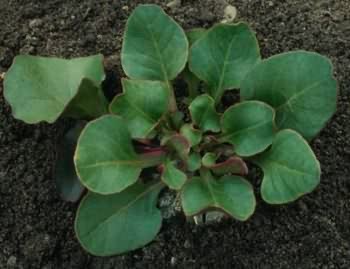Relatives
Beta macrorrhiza Stev. - Beet large-rooted
Taxonomic position.
Family Chenopodiaceae Vent., Genus Beta L.Morphology and biology.
Perennial plant, 40-60 cm tall, with thick, fusiform root, red inside. There are few stems on the plant, frequently they are prostrate, with deep grooves. Stem leaves are ovate, bottom ones are large, at their base slightly heart-shaped, blunt, on the leave-stalk. Bracteole leaves are ovate or nearly round, more long, then flower glomerulus. Inflorescences are lengthened, spicate, in their upper part without leaves. Flowers are collected in groups of 3 in the glomerulus. Perianth is with large shares, shares of fruits are flat, greenish, with white filmy edge. Seeds are large, oval, 3.5-4 mm long, black-brown, brilliant, with a net of wrinkles, compressed from sides. Blossoms in May-June, fructifies in June-July.Distribution.
This species is endemic to the Caucasus. In the territory of the former USSR: Caucasus: Dagestan, East Transcaucasia.Ecology.
Stony slopes.Use and economic value.
It is a wild relative of cultivated beet.Reference citations:
Cherepanov S.K. 1995. Plantae Vasculares Rossicae et Civitatum Collimitanearum (in limics USSR olim)[List of Vascular Plants of Russia]. St. Petersburg: Mir I Semia. 990 pp. (In Russian)Grossgheim, A.A. 1945. Flora of Caucasia. V. 3. Baku: Publishing House of Azerbaijan Acad. Science. 311 p., appendix. (In Russian)
Shishkin, B.K., ed. 1936. Flora USSR. V. VI. Moscow-Leningrad: Publishing House of Acad. Science. 39 p. (In Russian)


